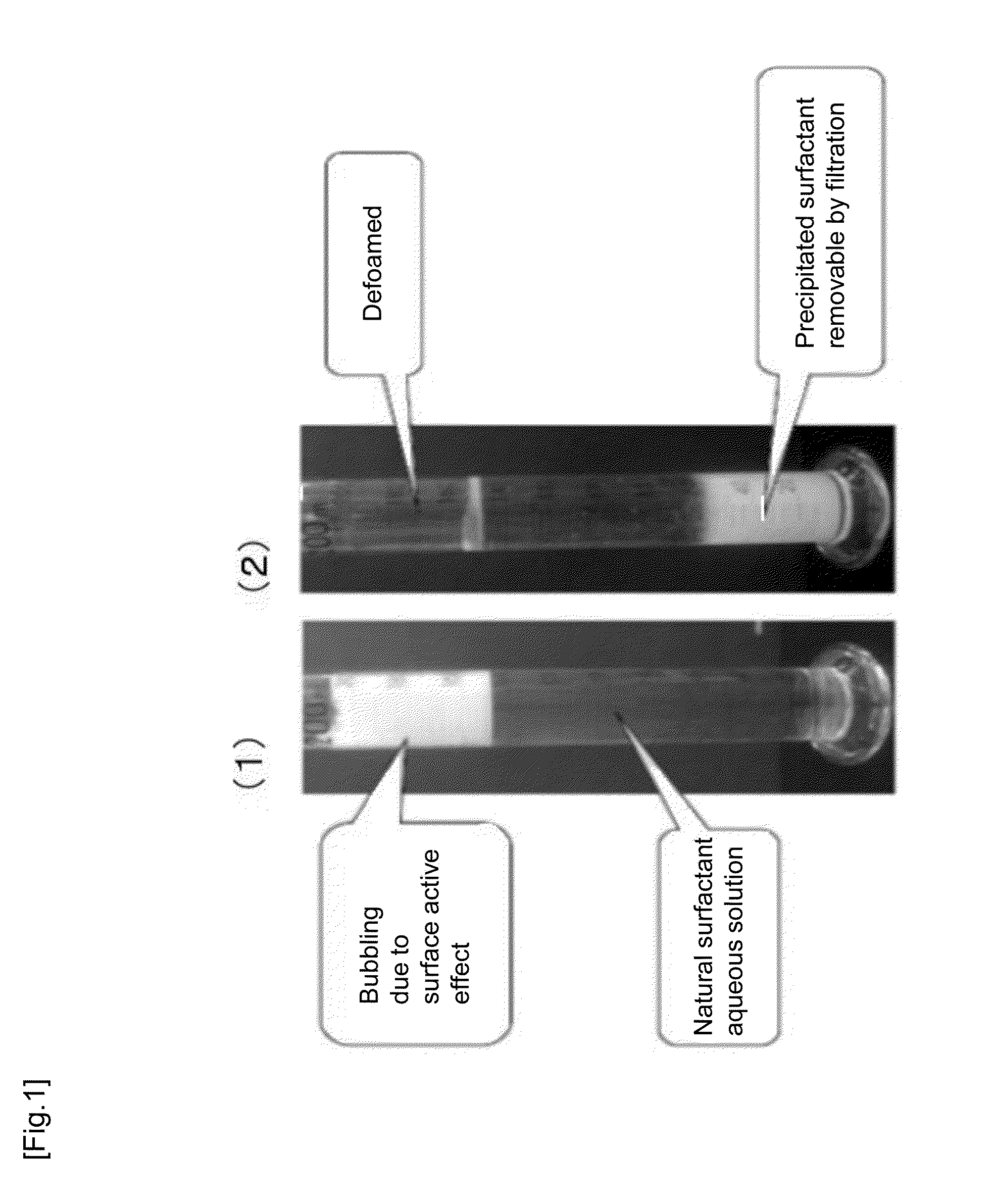Polymer production method
- Summary
- Abstract
- Description
- Claims
- Application Information
AI Technical Summary
Benefits of technology
Problems solved by technology
Method used
Image
Examples
example 1
[0091]Into a glass reactor equipped with a thermometer, a stirrer, a reflux condenser, a nitrogen flow device, and a device for adding a monomer and an emulsifier, 200 parts of distilled water and 0.01 parts of sodium surfactin were added. While the mixture was stirred in a nitrogen flow, the temperature thereof was raised up to 50° C. Then, a mixture of 10.0 parts of BA, 0.04 parts of AMA and 0.001 parts of t-butyl hydroperoxide was added thereto; and 10 minutes after, a solution of 0.2 parts of sodium sulfoxylate formaldehyde dissolved in 5 parts of distilled water and a solution of 0.005 parts of disodium ethylenediaminetetraacetate and 0.0025 parts of ferrous sulfate heptahydrate dissolved in 5 parts of distilled water were added thereto. The mixture was stirred for 1 hour to complete polymerization.
[0092]Even when about 0.0996 parts of sodium surfactin was used to 100 parts of the monomers as described above, a rubbery copolymer latex having an average particle diameter of 0.2 ...
example 2
[0093]A rubbery copolymer latex was produced in a similar condition to Example 1 except that the amount of sodium surfactin to be used was changed to 0.001 parts. As a result, an emulsion polymerization reaction proceeded even though the amount of used sodium surfactin was reduced to about 0.00962 parts to 100 parts of the monomers, and a rubbery copolymer latex having an average particle diameter of 0.5 μm was produced in a conversion rate of 79.5%.
example 3
[0096]Into a glass reactor equipped with a thermometer, a stirrer, a reflux condenser, a nitrogen flow device, and a device for adding a monomer and an emulsifier, 200 parts of distilled water and 0.002 parts of sodium surfactin were added. While the mixture was stirred in a nitrogen flow, the temperature thereof was raised up to 50° C. Then, a mixture of 1.0 parts of BA, 0.005 parts of AMA and 0.0001 parts of t-butyl hydroperoxide was added thereto; and 10 minutes after, a solution of 0.025 parts of sodium sulfoxylate formaldehyde dissolved in 5 parts of distilled water and a solution of 0.001 parts of disodium ethylenediaminetetraacetate and 0.0003 parts of ferrous sulfate heptahydrate dissolved in 5 parts of distilled water were added thereto. After the mixture was stirred for 1 hour, a monomer mixture composed of 85.5 parts of BA, 1.71 parts of AMA and 0.025 parts of t-butyl hydroperoxide was added dropwise over 5 hours. With the addition of the monomer mixture, a 5 mass % aqueo...
PUM
| Property | Measurement | Unit |
|---|---|---|
| Percent by mass | aaaaa | aaaaa |
| Percent by mass | aaaaa | aaaaa |
| Percent by mass | aaaaa | aaaaa |
Abstract
Description
Claims
Application Information
 Login to View More
Login to View More - R&D
- Intellectual Property
- Life Sciences
- Materials
- Tech Scout
- Unparalleled Data Quality
- Higher Quality Content
- 60% Fewer Hallucinations
Browse by: Latest US Patents, China's latest patents, Technical Efficacy Thesaurus, Application Domain, Technology Topic, Popular Technical Reports.
© 2025 PatSnap. All rights reserved.Legal|Privacy policy|Modern Slavery Act Transparency Statement|Sitemap|About US| Contact US: help@patsnap.com



